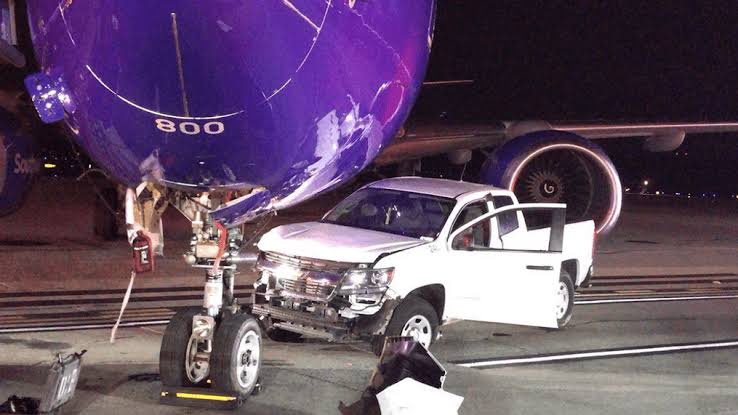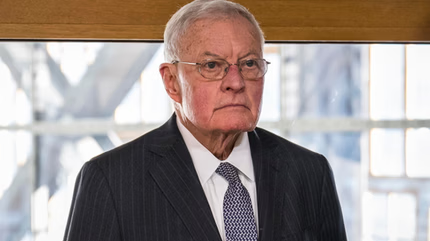“Southwest Airlines Flight Runs Through Chicago Airport Fence, Strikes Car—Claims Live Of ….
Southwest Airlines Flight Runs Through Chicago Airport Fence, Strikes Car—Claims Life of 6-Year-Old in Tragic 2005 Incident
On a snowy December evening in 2005, what began as a routine domestic flight ended in disaster when Southwest Airlines Flight 1248 overran the runway at Chicago Midway International Airport. The Boeing 737-700, unable to stop on the snow-covered pavement, plowed through a perimeter fence and onto a busy city street, colliding with several vehicles. In the aftermath, a 6-year-old boy lost his life—an innocent victim in a chain of misjudgments and mechanical failures.
Nearly two decades later, the incident remains one of the most sobering moments in Southwest Airlines’ operational history. It served as a stark reminder of how weather conditions, technical systems, and human decisions must align flawlessly to ensure air travel safety.
A Routine Flight Turned Tragic
Flight 1248 had departed from Baltimore-Washington International Airport on December 8, 2005, with 103 people aboard: 98 passengers and five crew members. The flight was supposed to conclude uneventfully with a landing in Chicago, despite wintry conditions sweeping through the Midwest. Snow had been falling steadily throughout the day, and visibility was poor.
Upon approach to Midway Airport, the pilots of Flight 1248 opted to land on Runway 31C, a runway known for its relatively short length and lack of adequate buffer space beyond its boundaries. Despite these limitations, Midway remained open and operational, and Southwest had not diverted flights.
As the aircraft touched down, the situation escalated rapidly. The plane skidded on the slick runway, its wheels struggling to find grip. The thrust reversers deployed late and ineffectively, and the autobrake system failed to stop the aircraft in time. Within seconds, the jet had barreled past the end of the runway.
Breaking the Perimeter
The aircraft careened through the runway’s barrier and crashed through the airport’s perimeter fence. Beyond the fence was Central Avenue, a busy street running adjacent to the airport. In a horrifying few seconds, Flight 1248 slammed into two vehicles—one of which carried a local family traveling home during the evening rush hour.
Inside the struck vehicle was the Burdi family. Their 6-year-old son, Joshua Woods, was seated in the back seat and took the brunt of the impact. Despite emergency efforts, Joshua was pronounced dead shortly after being rushed to a nearby hospital. The rest of his family survived with injuries and unimaginable trauma.
The collision marked the first fatal accident involving a Southwest Airlines passenger aircraft since the airline’s founding in 1967.
Immediate Response and Rescue
Emergency crews arrived within minutes of the incident. The priority was twofold: evacuating passengers from the damaged aircraft and providing immediate medical assistance to those involved in the crash beyond the airport fence.
Passengers aboard Flight 1248 used inflatable slides and emergency exits to evacuate. While many were shaken and some suffered minor injuries, there were no fatalities among the flight’s passengers or crew. The focus quickly turned to those affected on the ground.
As investigators began to arrive, local authorities cordoned off the scene and launched an extensive inquiry into how a commercial airliner could leave airport property and end up on a city street.
The NTSB Investigation: What Went Wrong?
The National Transportation Safety Board (NTSB) initiated a comprehensive investigation that lasted over a year. In their final report, released in late 2007, several contributing factors were identified:
1. Pilot Decision-Making: The flight crew chose to land on Runway 31C despite knowing it had limited space and was surrounded by urban infrastructure. A decision to divert or hold would have been safer under the prevailing conditions.
2. Tailwind Landing: The pilots attempted to land with a significant tailwind, which increased the aircraft’s ground speed and reduced braking effectiveness.
3. Delayed Thrust Reversal: The first officer, who was handling the landing, failed to deploy the thrust reversers in a timely manner. The delay critically reduced the aircraft’s deceleration.
4. Autobrake System Mismanagement: There was confusion and possible misconfiguration of the autobrake system, which failed to apply the necessary stopping power under the slippery conditions.
5. Inadequate Runway Safety Areas: Midway Airport, located in a dense urban environment, lacked Engineered Material Arresting Systems (EMAS)—safety features that could have slowed or stopped the plane before it left the airport boundary.
The report did not place sole blame on any one party but highlighted the complex interplay between human error, weather, and infrastructural limitations.
Southwest Airlines’ Response and Settlements
Southwest Airlines publicly expressed its deep sorrow and sympathy for the Woods family and others affected by the accident. The airline quickly settled civil lawsuits brought by the family and others involved, though specific amounts were kept confidential.
Internally, Southwest took significant steps to improve pilot training, particularly around landings in adverse conditions. The airline also reviewed operational protocols around winter weather and runway selection.
In the years following the accident, EMAS beds were installed at Midway Airport and other similarly constrained airports across the country. These systems are designed to decelerate aircraft that overrun runways by using crushable materials that safely stop the plane without causing significant damage.
A Lasting Legacy
While air travel is statistically one of the safest modes of transportation, Flight 1248 remains a haunting example of how a cascade of small decisions and oversights can lead to tragedy.
The death of Joshua Woods triggered a national conversation about runway safety and airport design in urban settings. Many families who lived near airports began advocating for improved perimeter protection and better emergency planning.
In the aviation industry, the incident served as a wake-up call. Airlines, airports, and regulators took a closer look at winter landing protocols, airport infrastructure, and emergency preparedness. The NTSB’s findings led to new training standards and updated federal guidelines on runway safety areas.
Remembering the Victims
Every December, aviation safety advocates and the Woods family quietly mark the anniversary of the crash. While time has dulled some of the raw pain, the memory of that snowy evening and the life lost remains a poignant reminder of the human cost behind aviation safety statistics.
For Southwest Airlines, Flight 1248 is remembered not only for the tragedy but for the sweeping changes that followed. Today, every successful landing at Midway—and at airports around the country—is, in part, a testament to the lessons learned from that terrible night.






